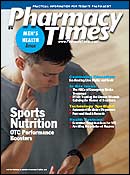Look-alike Name Confusion
Many medications have been mixed up because of poorly handwritten prescriptions?2 particular mix-ups are presented here, as well as suggestions to prevent them from occurring again.
Dr. Gaunt is a medication safetyanalyst and the editor of ISMPMedication Safety Alert!Community/Ambulatory CareEdition.
When faced with a poorly writtenprescription, pharmacistscan use a number of strategiesto avoid dispensing the wrong medication.These examples illustrate theproblem and offer suggestions for educatingstaff about look-alike and soundalikedrug name confusion.
Sudafed?Sotalol Mix-up
A community pharmacist recentlyreceived the prescription seen in Figure1. The medication was initially interpretedas sotalol, an antiarrhythmic. Thepharmacist noted, however, that sotalolis not available as an "LA" product andcontacted the prescriber. It was discoveredthat the prescriber intendedthe patient to receive Sudafed (pseudoephedrine).

Figure 1
With the changes in the law regardingOTC stocking and dispensing ofpseudoephedrine products, pharmacistsmay see more prescriptions forpseudoephedrine. Include the genericname and indication on pseudoephedrineprescriptions. If the indication is notincluded on the prescription, verify themedication's purpose (with the patientand/or prescriber) before dispensing.Encourage prescribers to adopt electronicprescribing technology to transmitprescription information.
Soriatane?Sonata Reporting Physician Mix-ups
A physician recently contacted ISMPabout a medication error that involvedher own mother. The reporter's motheris an elderly, non?English-speakingwoman who relies on Soriatane (acitretin)to treat her severe psoriasis. Shehad been taking 25 mg daily, but thedermatologist reduced her dose to 10mg daily and provided her with a newprescription, which was taken to thesame pharmacy that dispensed priorSoriatane prescriptions. The handwrittenprescription (Figure 2) was misinterpretedand dispensed as Sonata (zaleplon)10 mg daily—a medication used forthe short-term treatment of insomnia.Fortunately, the patient questioned herdaughter about the significant change incapsule appearance and did not ingestthe medication.
Taking Sonata instead of Soriatanewould have placed her at increasedrisk for side effects, such as dizzinessand sedation, and also would have lefther psoriasis untreated. The order wasconfirmed with the dermatologist, whoattributed the error to the pharmacy, butnoted that the same error had occurredpreviously with one of his prescriptions.

Figure 2
Unfortunately, the daughter contactedus again the following month after thesame error occurred when her motherpresented a handwritten prescriptionfrom the same physician at the samepharmacy. Factors that contributed toboth errors include handwritten drugname similarities, availability of bothproducts in a 10-mg strength, and oncedailydosing. Confirmation bias likelyplayed a role, as the pharmacy supervisornoted that Sonata is dispensedmuch more frequently than Soriatane.To reduce these errors, the reporterrecommended that prescribers includebrand and generic names, as well asthe indication, on prescriptions. She alsomentioned the value of a pharmacist'sreview of the medication with the patientto reduce errors. We also would recommendthat all practitioners better utilizeinformation that has been provided tothem. For example, knowing that hishandwritten prescriptions contributedto at least 2 errors, the dermatologistshould take preventive steps when prescribingSoriatane. Likewise, when newprescriptions are processed, pharmacistsshould review the patient profileto evaluate the appropriateness of theorder and consider if the prescribedmedication is within the typical scope ofthe physician's practice.

